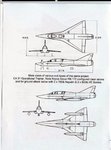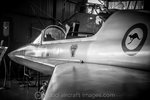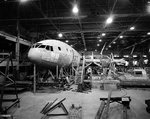Interesting stuff guys!
Navigation
Install the app
How to install the app on iOS
Follow along with the video below to see how to install our site as a web app on your home screen.
Note: This feature may not be available in some browsers.
More options
You are using an out of date browser. It may not display this or other websites correctly.
You should upgrade or use an alternative browser.
You should upgrade or use an alternative browser.
Aircraft Mock-Ups
- Thread starter Capt. Vick
- Start date
Ad: This forum contains affiliate links to products on Amazon and eBay. More information in Terms and rules
More options
Who Replied?johnbr
2nd Lieutenant
Attachments
Last edited:
- Thread starter
- #143
That is so cool! Thanks for posting!
vikingBerserker
Lieutenant General
Wow, that one I have never heard of!
Good stuff!
Full scale mock-up "on a stick" circa 2000. Intended to be a six place kitplane from Fremont(?) California, it was expected to have a top speed of 434 mph on a 800 hp "TGV 750" engine. I have serious doubts if it ever flew and if any kits were sold. Anyone know more?
The name given was the Star Aviation AvStar.

The name given was the Star Aviation AvStar.
- Thread starter
- #148
Wow! That is one overly realistic decoy!
- Thread starter
- #150
Sweet! Thanks for posting!
GrauGeist
Generalfeldmarschall zur Luftschiff Abteilung
There was the Ho.IX (Ho229) 1:1 mockup built for testing, a few years ago

Nice shots guys!
GregP
Major
This is a pretty interesting series of pics. Thank you to all who posted!
- Thread starter
- #154
Yeah! I love mockups. What was originally planned, what once was and what will never be... Would have made a nice museum of design.
Yeah! I love mockups. What was originally planned, what once was and what will never be... Would have made a nice museum of design.
I think the Ho229 was used in a programme comparing its stealth qualities to the latest US stealth aircraft.
GrauGeist
Generalfeldmarschall zur Luftschiff Abteilung
They built the Ho.IX replica to address several questions. Northrup-Grumman built it using data from original design and from lengthy investigation of the actual Ho.IX stored at the Smithsonian.
So unlike many replica aircraft on display in museums (He178, He162, Me163, etc.), this particular reproduction was built as close to an actual operating Horton as possible.
It's currently on display at the San Diego Air and Space Museum.
So unlike many replica aircraft on display in museums (He178, He162, Me163, etc.), this particular reproduction was built as close to an actual operating Horton as possible.
It's currently on display at the San Diego Air and Space Museum.
johnbr
2nd Lieutenant
Operational Trainer – Full size mockup (on display) in the back of the Australian National Aviation Museum, at Moorabbin Airport near Melbourne, Australia. The mock-up is disassembled and against one wall (easily missed).
In March 1964, with the Mirage fighter being delivered to the RAAF, the Melbourne based Commonwealth Aircraft Corporation presented its idea for a locally designed and manufactured, advanced supersonic aircraft designed to meet both flying and weapons training needs.
The basis of the project was that there was no type with this dual capability available anywhere in the world. In the 1960s, it was also seen that there was a huge gap between flying jet trainers and modern high speed fighters. This difference involved more than just speed, the flying characteristics of supersonic delta wing fighters were quite different to the subsonic trainers then available.
The original design featured a double delta wing powered by a single GE – J85 engine (~3,000 lbst/~4,300 lbst AB), the design was advanced to the stage of constructing this full size mockup, and then revised to incorporate the Rolls Royce RB172 Adour engine.
The aircraft was to feature Martin Baker ejection seats and be capable of carrying a load of 1815 kg on four wing and two fuselage hardpoints.
The RAAF jet trainer requirement was eventually fulfilled in 1967 by Macchi Trainers licence built by CAC, and a number of 2 seat Mirages built by GAF in Melbourne, resulting in the CA-31 project being canceled, effectively ending CAC's indigenous designs.
Engine: Rolls Royce RB172 Adour jet (4,600 lbst dry, 6,900 lbst reheat)
Length: 37 feet 8.5 inches (11.5 m)
Span: 21 feet 0 inches (6.4 m)
Height: 10 feet 9.5 inches (3.30 m)
Weight: 6,080 pounds (empty) (2,758 kg); ~8,500 max (3,864 kg) (trainer version)
Speed: 1.5 Mach
Range: 1,050 miles (1,750 km)
Attachments
Last edited:
johnbr
2nd Lieutenant
- Thread starter
- #159
Two great posts! Thanks!
vikingBerserker
Lieutenant General
What is the aircraft in #158?
Users who are viewing this thread
Total: 1 (members: 0, guests: 1)




